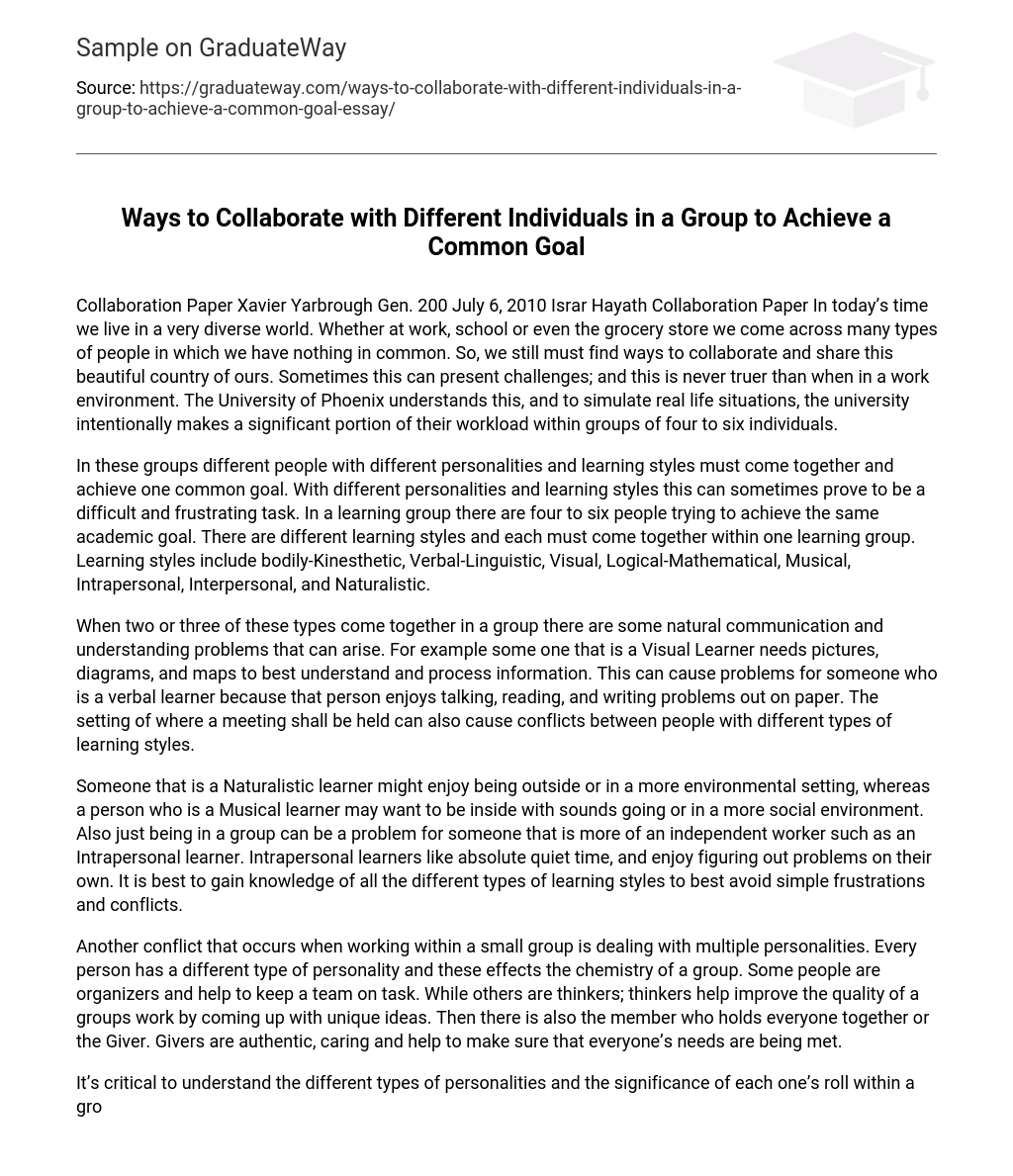Collaboration Paper Xavier Yarbrough Gen. 200 July 6, 2010 Israr Hayath Collaboration Paper In today’s time we live in a very diverse world. Whether at work, school or even the grocery store we come across many types of people in which we have nothing in common. So, we still must find ways to collaborate and share this beautiful country of ours. Sometimes this can present challenges; and this is never truer than when in a work environment. The University of Phoenix understands this, and to simulate real life situations, the university intentionally makes a significant portion of their workload within groups of four to six individuals.
In these groups different people with different personalities and learning styles must come together and achieve one common goal. With different personalities and learning styles this can sometimes prove to be a difficult and frustrating task. In a learning group there are four to six people trying to achieve the same academic goal. There are different learning styles and each must come together within one learning group. Learning styles include bodily-Kinesthetic, Verbal-Linguistic, Visual, Logical-Mathematical, Musical, Intrapersonal, Interpersonal, and Naturalistic.
When two or three of these types come together in a group there are some natural communication and understanding problems that can arise. For example some one that is a Visual Learner needs pictures, diagrams, and maps to best understand and process information. This can cause problems for someone who is a verbal learner because that person enjoys talking, reading, and writing problems out on paper. The setting of where a meeting shall be held can also cause conflicts between people with different types of learning styles.
Someone that is a Naturalistic learner might enjoy being outside or in a more environmental setting, whereas a person who is a Musical learner may want to be inside with sounds going or in a more social environment. Also just being in a group can be a problem for someone that is more of an independent worker such as an Intrapersonal learner. Intrapersonal learners like absolute quiet time, and enjoy figuring out problems on their own. It is best to gain knowledge of all the different types of learning styles to best avoid simple frustrations and conflicts.
Another conflict that occurs when working within a small group is dealing with multiple personalities. Every person has a different type of personality and these effects the chemistry of a group. Some people are organizers and help to keep a team on task. While others are thinkers; thinkers help improve the quality of a groups work by coming up with unique ideas. Then there is also the member who holds everyone together or the Giver. Givers are authentic, caring and help to make sure that everyone’s needs are being met.
It’s critical to understand the different types of personalities and the significance of each one’s roll within a group. In closing, working in groups can be a unique but complicated challenge. With the multiple learning styles and personalities of various people each member must learn to adjust. Sometimes it is our human nature to be selfish and only think of ourselves, but working within a group that can be a very destructive trait. In a group one must learn their members learning habits and adjust to the multiple personalities to be successful and reach their goal of academic success.





